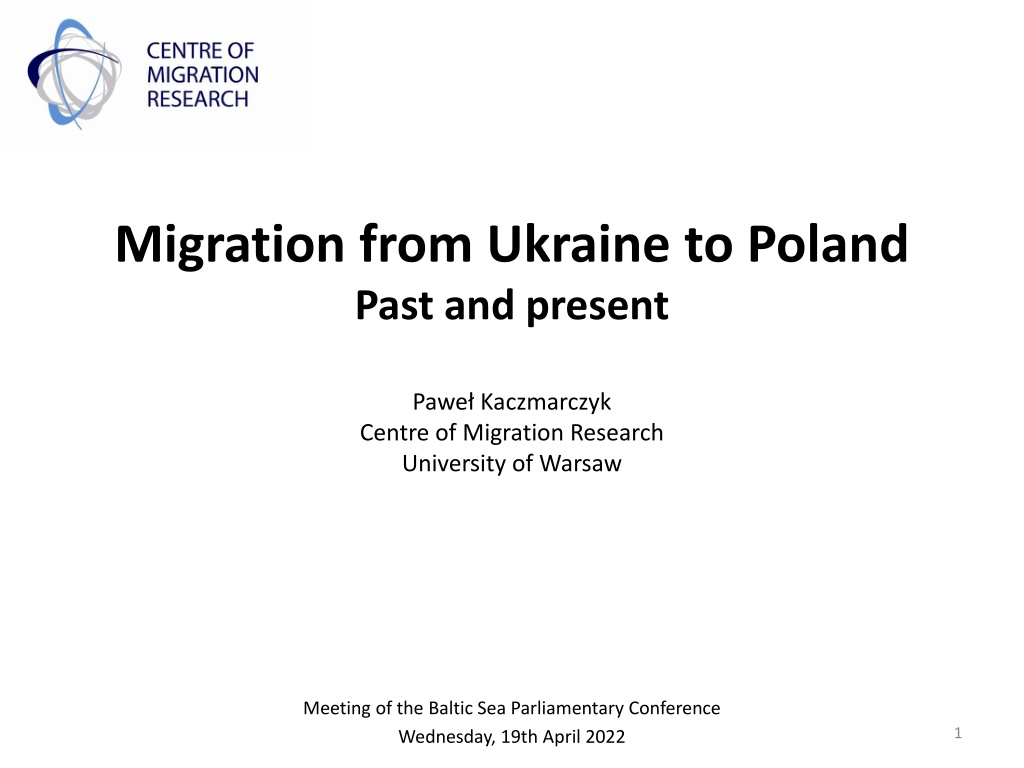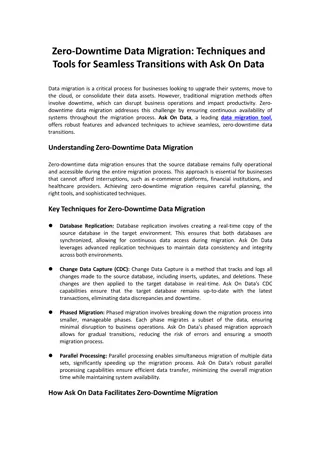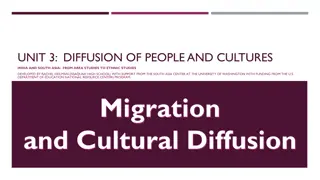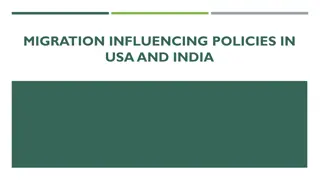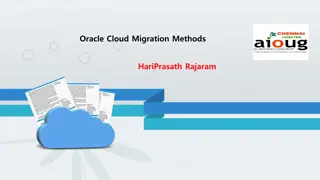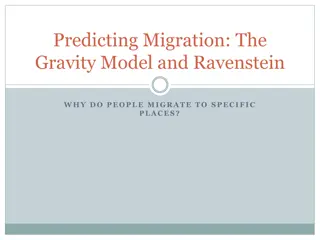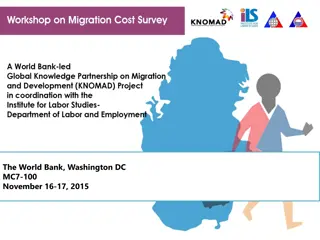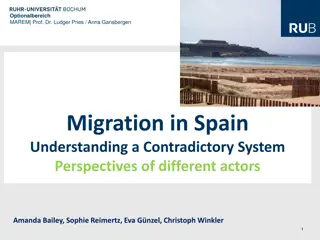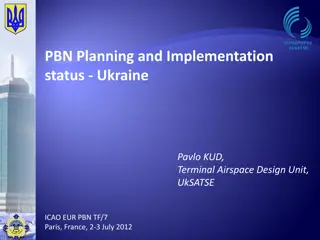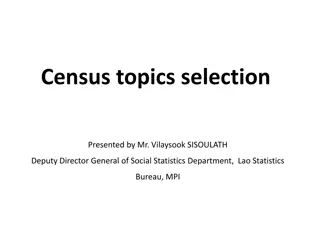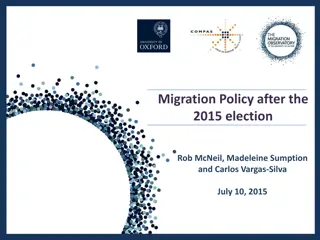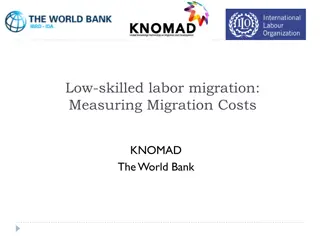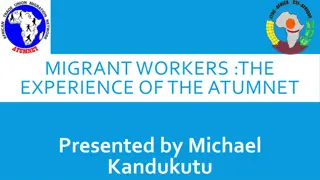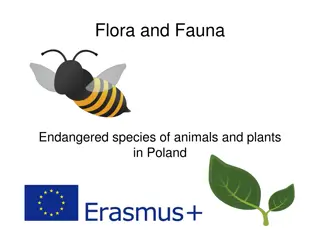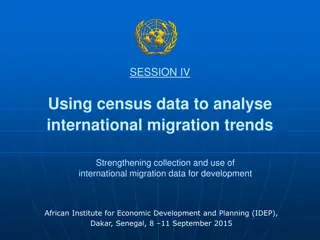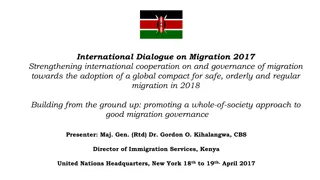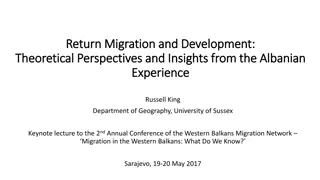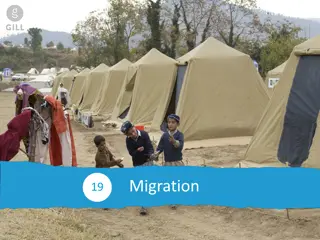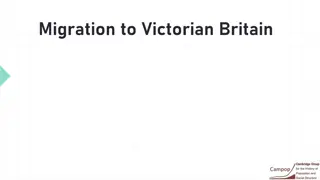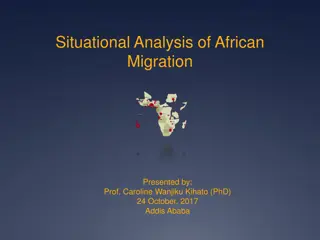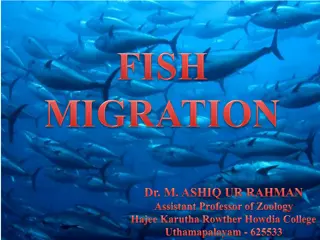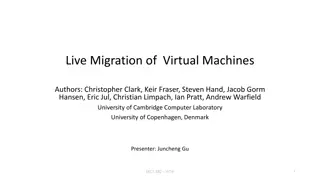Migration Trends: Ukraine to Poland and Poland to Ukraine
Analysis of migration patterns between Ukraine and Poland, focusing on historical context, current statistics, and legal aspects such as work permits. Key drivers, demographic trends, and challenges in both countries are explored, providing insights into the complex nature of migration within the region.
Download Presentation

Please find below an Image/Link to download the presentation.
The content on the website is provided AS IS for your information and personal use only. It may not be sold, licensed, or shared on other websites without obtaining consent from the author. Download presentation by click this link. If you encounter any issues during the download, it is possible that the publisher has removed the file from their server.
E N D
Presentation Transcript
Migration from Ukraine to Poland Past and present Pawe Kaczmarczyk Centre of Migration Research University of Warsaw Meeting of the Baltic Sea Parliamentary Conference Wednesday, 19th April 2022 1
What I will talk about Migration from Poland to Ukraine Context Process Outlook 2
Context: Poland as a New Immigrant Destination? First residence permits issued in the EU countries, 2008-2018 Key drivers: - Supply side war in the Eastern part of Ukraine migration pressure - Demand side labour market needs and the role of simplified procedure Source: EUROSTAT
Context: Poland as a New Immigrant Destination Immigrants residing in Poland (18 years and older, 2016 as for end of Dec.) - 744 thousand - Males (67%) - Productive age (97%) - Ukrainians (61%) 2015: 284 thousand 2016: 455 thousand - 70% up to 12 months - 36% with tertiary education - Warsaw (22%) End of 2020: 5-7% decline (MAC) End of 2019: 2.2 milion of immigrants (CSO 2020) Source: CSO 2018
Context: legal paths to employment in Poland Work permits Declaration of hiring a foreigner Seasonal work permit Specified period, up to 3 years, it can be prolonge Up to 6 months within 12 months (24 months) Up to 9 months within calendar year, it can be prolonged in particular circumstances For how long? All sectors excluding those covered by seasonal work permit All sectors excluding those covered by seasonal work permit Yes, selected sectors listed in ministry ordinance: agriculture and (in limited scope) hotels and catering Sector limitations? No Yes (citizens of Ukraine, Russia, Belarus, Moldova, Armenia and Georgia; possibility to add other countries as target group of the instrument) No, but there are preferences for citizens of selected 6 countries (no labour market test, entry to the register of seasonal work for 3 years) Territorial limitations? 50 / 100 / 200 PLN 30 PLN 30 PLN Cost of obtaining Regional governor (wojewoda) Local labour office Local governor (local labour office) Body responsible for issuance or acceptance YES YES YES Obligation of reporting to the office YES (many exemptions from the obligation) NO YES (possibility of expemtping from the obligation nationals of 6 countries covered by declaration procedure) Labour market test 5 Source: Szulecka 2018
Context: labour immigration to Poland Main forms of employment in Poland, 2018-2021 Seasonal patterns of employment, 2018-2021 Ukraine: - Declarations: 88% - Work permits: 71% - Seasonal work permits: 98% 6 Source: Wiatr w 2022
Context: labour immigration to Poland 7 Source: G rny & leszy ski 2019
Context: attitudes towards immigrants - immigration as a threat? Conclusions: Drop in negative assessment of immigration since 2016 (exception: Germany role of refugee / migration crisis?) In most cases symbolic (cultural) threat not as strong as an economic one Outliers : IT, ES, plus CEE (CZ, HU, SK) 8 Source: Own elaboration based on the ESS data
Context: attitudes towards immigrants - hostility towards newcomers Conclusions cont.: Different trends in hostility towards newcomers in various parts of the EU particularly HU, CZ, PL, SK, IT Germany as a very interesting case relatively high acceptance despite enourmous intake of immigrants 9 Source: Own elaboration based on the ESS data
But not only country of origin matters imagined immigrants (Blinder 2015): How to explain differences in hostility towards newcomers? Poland key origin countries (CSO 2018): - Ukraine (450 thous.) - EU countries (50 thous.) - Belarus (21 thous.) Germany key origin countries (OECD 2019): - Poland (13%) - Turkey (10%) - Russia (8%) Italy key origin countries (OECD 2019): - Romania (17%) - Albania (8%) - Morocco (7%) (new flows: RO, NI, MO) 10 Source: Own elaboration based on the ESS data (new flows: RO, PL, BG)
How to explain differences in attitudes towards immigrants? (the case of Poland) 11 Source: Own elaboration based on the ESS data
Context: situation on the BY-PL border Basic facts: July 2021 Eastern Border Route 3000 persons / month August 2021 persons trapped at the BY-PL border (GrupaGranica == Border Group) August 2021 act legalising expulsions (on the PL side) (Act on Foreigners amended in Sep 2021); monitoring starts September 2021 State of Emergency introduced (around 200 localities) November 2021 act on construction of border security measures (fence) November (8th) 2021 3000 persons directed by BY services to the border; border crossing s attempts and escalation; relocation Around 30 thous. attempts to cross the border illegally (till end of Nov) (BG) in the period 1.01-15.11.2021 the Border Guard received 3.6 thous. applications concerning 6.2 thous. persons Unknown no. of push-backs Over 5 thous. people asked for assistance (BorderGroup) Over 9 thous. people reached DE Migration crisis? 12
Process: what happened after February 2024 13 Source: OCHA 2022; UNHCR 2022
Process: what happened after February 2024 14 Source: Kubisiak 2022
Process: what happened after February 2024 Warsaw (as for the end of March): - no. of persons who arrived to Warsaw: 575 thous. - no. of persons staying in Warsaw: 300 thous. - no. of persons with ID alloted: 33 thous. - no. of persons in care facilities: 246 thous. - no. of kids in education: 13 thous. Early registration data: - PESEL: 927 thousand (14.04) - <18 y.o. 48.3% - women 44.7% - 65+ 3.5% - Employed > 60 thous. (females: 76%) 15 Source: Kubisiak 2022 Source: Warsaw City Council Source: Kubisiak 2022
Outlook Key unknowns When and how the war will end? What will be the economic / political / social situation in Ukraine? What will be the future inflow and what will happen with people who have left the war zone so far? Early expectations and scenarios Starting point (April 2022): 2.85 mio (1.35 + 1.5 mio); F (18-65): 40%; children: 26%; elderly: 0.3% Three main scenarios: I: Long continous conflict (steady increase and return mobility, structural changes) 3 mio. II: Peace scenario end of war and fast recovery (massive returns, selective stayers) 2 mio. III: Long war and difficult recovery (additional inflow, particularly females, children and elderly) 3.2 mio. IV: Defeat of UKR and massive destruction of the country 16
Outlook Challenges Housing (relocation?) Education / child care Health care Labour market Attitudes towards newcomers // politicization and media impact communication strategies 17
